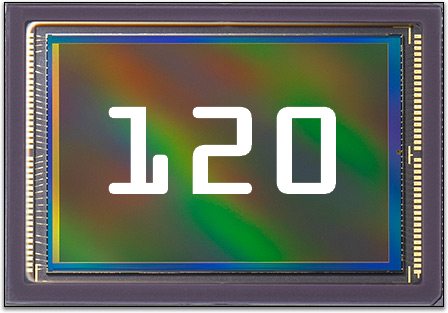
This is a bit insane. Canon has produced a sensor smaller outputting a ridiculous 120 megapixels, packed into an area smaller than a 35mm film frame. This is almost certainly mainly an R&D thing, however. Don’t expect a 120-megapixel camera any time soon.
I went into this in some detail a few months ago, and pixel density really isn’t a worthwhile goal any more. Sure, you can pack 1080p onto something half the size of your fingernail, but there are so many fail points along the line that image quality is going to be awful. I’m sure Canon’s aware of that, but it’s possible that a system like this could be used beneficially.
It’s not like they have to produce a gigantic image every time. By reducing the size of the pixel wells, they can optimize their existing lenses and image processors to deal with inadequate light, deflection, lens flaws, and so on. This 120-megapixel sensor is likely a test bed for that kind of research.
They say they can get 9.5 images per second off the sensor, which is impressive, but a 120-megapixel image would be… well, gigantic. That’s 13,280 x 9,184, and the resultant images would likely be several gigabytes. Systems that can write ten gigabytes per second are hard to come by, and certainly wouldn’t fit in a regular camera, so don’t get any ideas. We’re talking RAID arrays of RAID arrays here. I whipped up a quick diagram to show you what 120 megapixels would look like compared to 10.

Anyway, though, good for Canon. They’re pushing hard and this kind of research might help them put out something leapfroggish in the next generation of cameras. Though I’d really prefer better low light performance.
[via CNET]